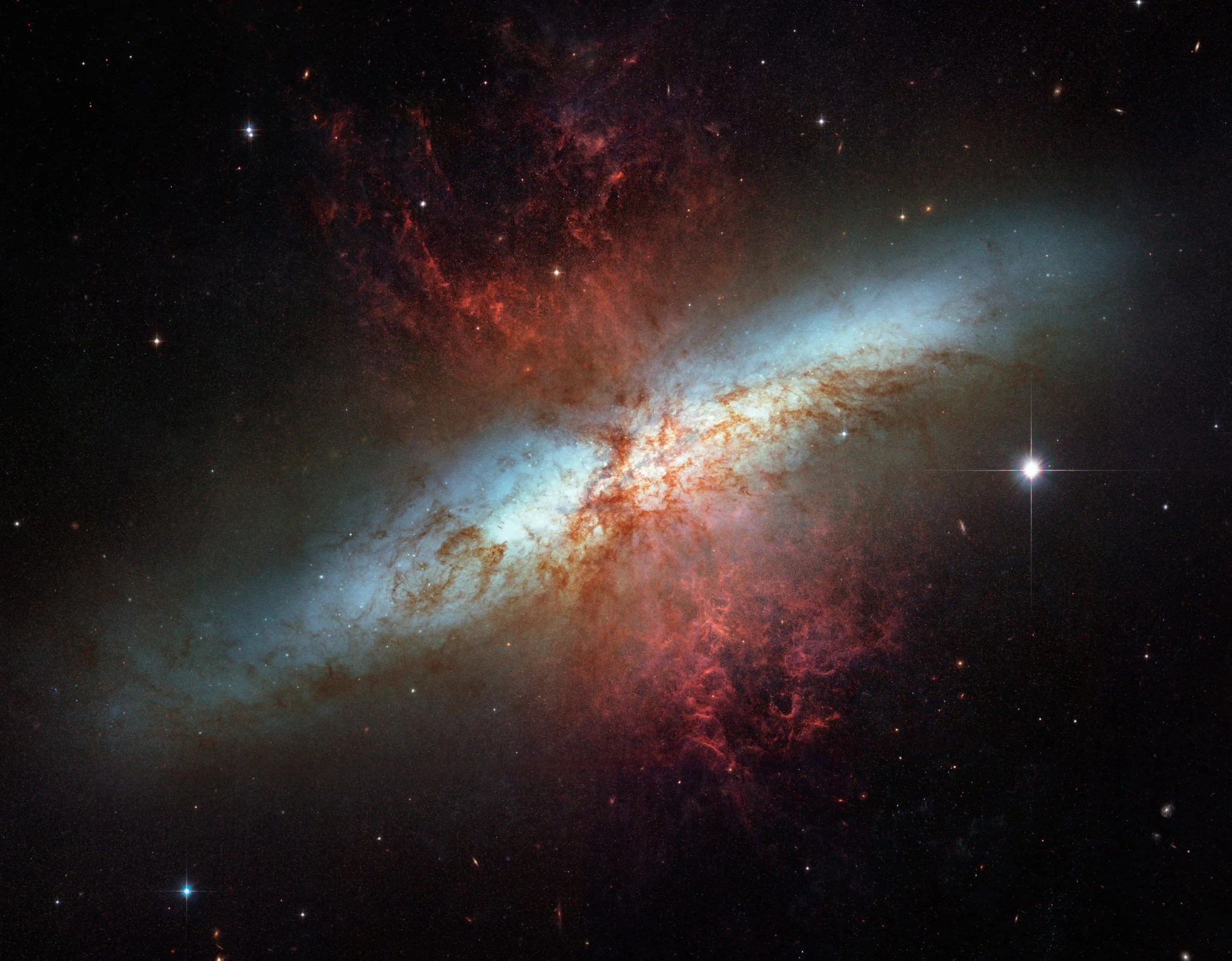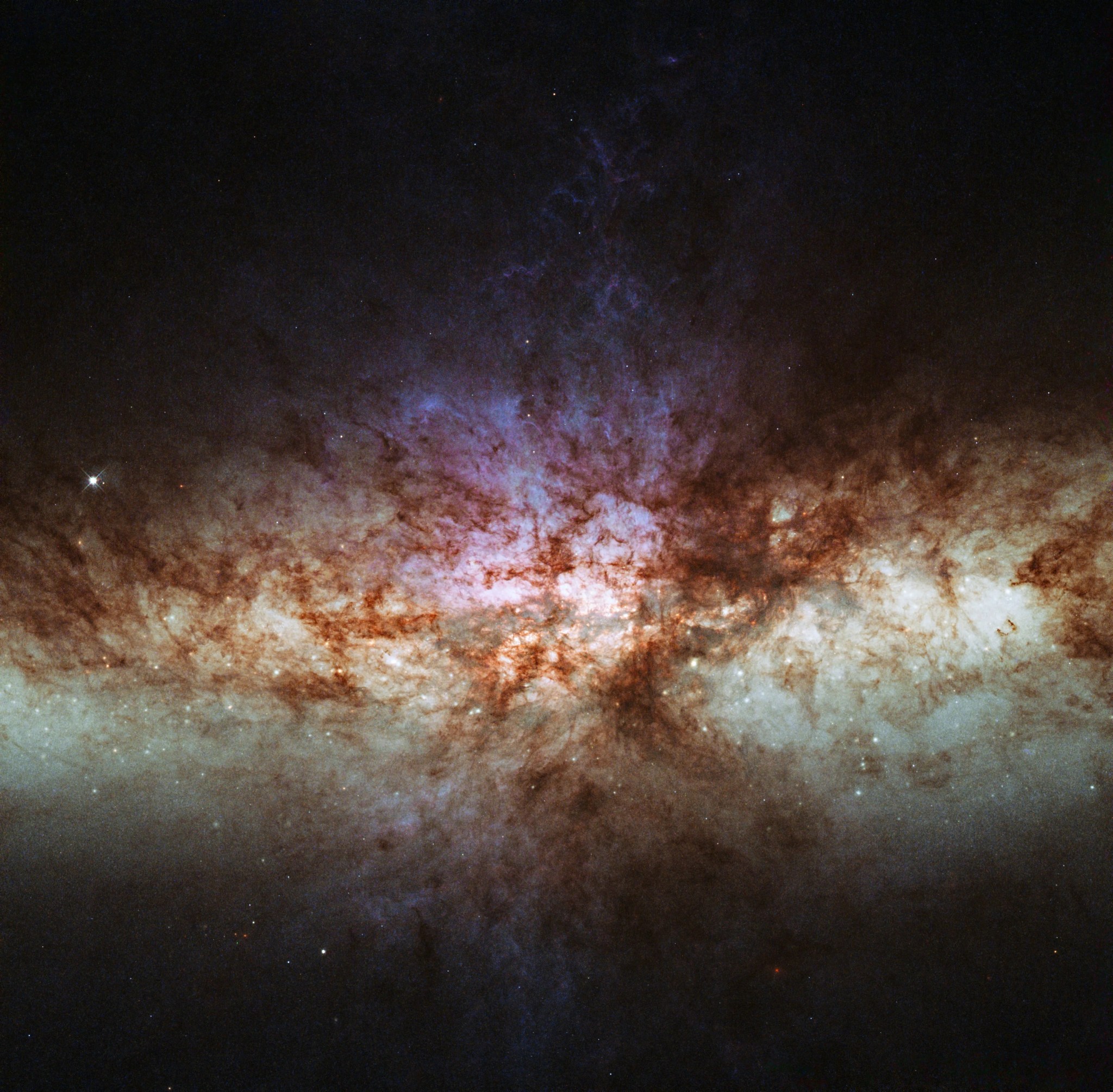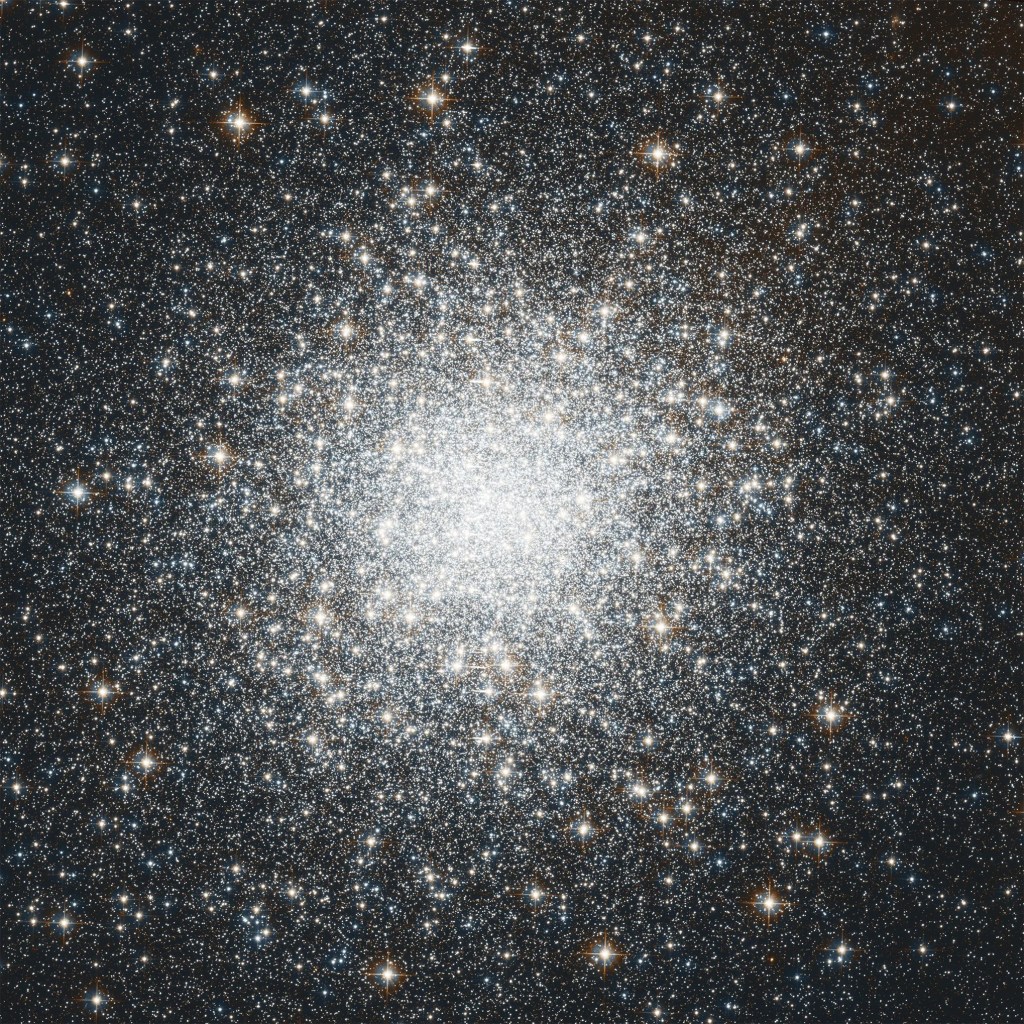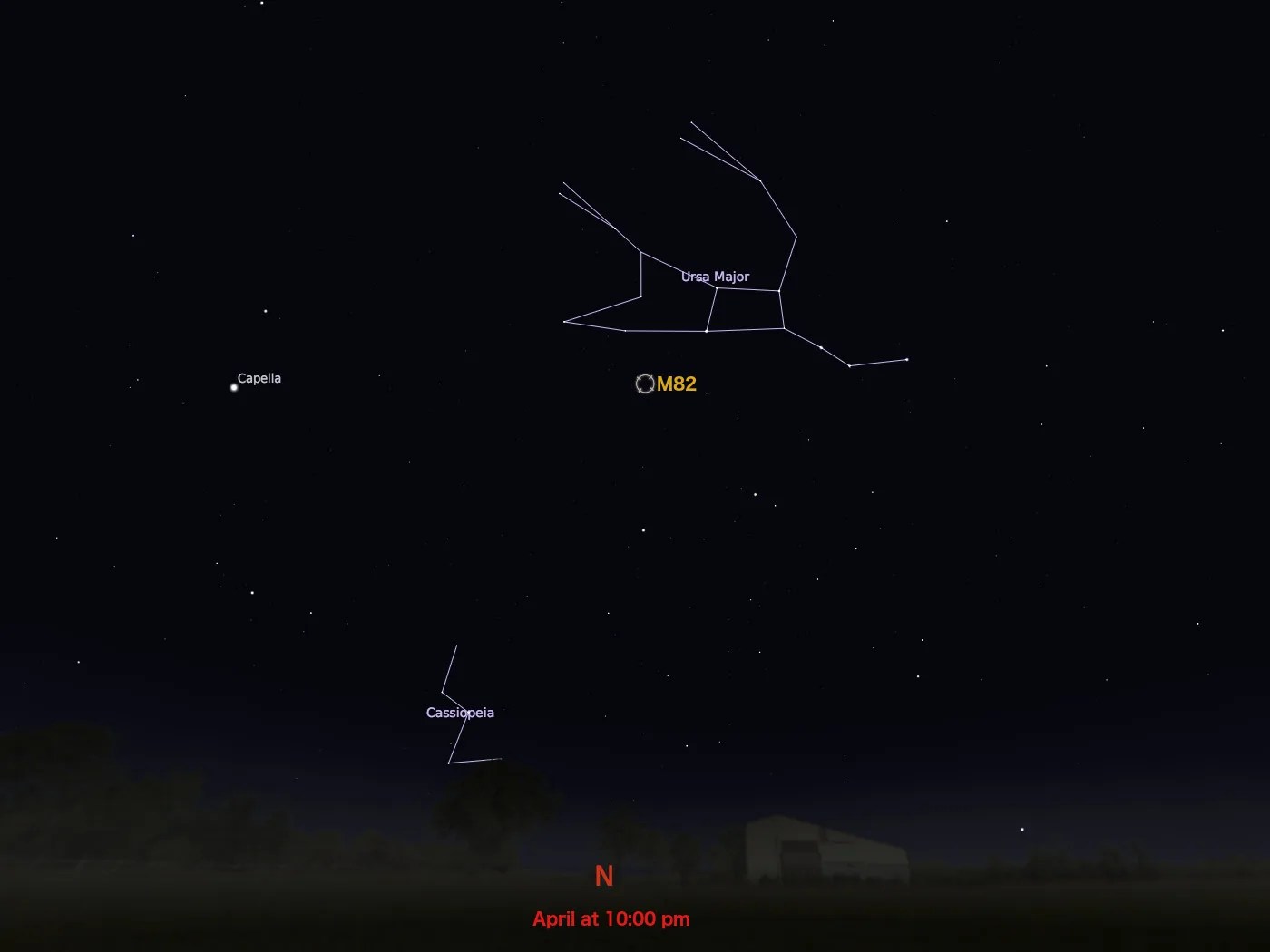Messier 82
This galaxy's center is forming stars 10 times faster than our entire Milky Way.
Distance
12 million light-years
Apparent Magnitude
8.4
constellation
Ursa Major
object type
Spiral Galaxy

M82 or the Cigar galaxy, shines brightly at infrared wavelengths and is remarkable for its star formation activity. The Cigar galaxy experiences gravitational interactions with its galactic neighbor, M81, causing it to have an extraordinarily high rate of star formation — a starburst.

Around the galaxy’s center, young stars are being born 10 times faster than they are inside our entire Milky Way galaxy. Radiation and energetic particles from these newborn stars carve into the surrounding gas, and the resulting galactic wind compresses enough gas to make millions of more stars. The rapid rate of star formation in this galaxy eventually will be self-limiting. When star formation becomes too vigorous, it will consume or destroy the material needed to make more stars. The starburst will then subside, probably in a few tens of millions of years.
M82 was discovered, along with its neighbor M81, by the German astronomer Johann Elert Bode in 1774. Located 12 million light-years from Earth in the constellation Ursa Major, M82 has an apparent magnitude of 8.4 and is best observed in April. Although it is visible as a patch of light with binoculars in the same field of view as M81, larger telescopes are needed in order to resolve the galaxy’s core.
For more information about Hubble’s observations of M82, see:
- Hubble Images Celestial Cigar’s Smoldering Heart
- Happy Sweet Sixteen, Hubble Telescope!
- Smoke Without Fire: A Different View of the Cigar Galaxy
- Hubble Movie Shows Movement of Light Echo Around Exploded Star
- Hubble Finds that "Blue Blobs" in Space are Orphaned Clusters of Stars
Explore Hubble's Messier Catalog
The following pages contain some of Hubble’s best images of Messier objects.

Overview The Messier catalog, begun by astronomer Charles Messier in the 18th Century and revised over the years, includes some…

Better known as the Crab Nebula, Charles Messier originally mistook Messier 1 for Halley’s Comet, which inspired him to create…

Hubble's image of Messier 2 is comprised of visible and infrared wavelengths of light.

































